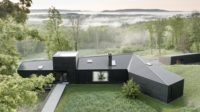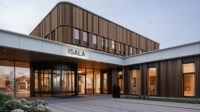House of the Month
Lütjens Padmanabhan Makes Room for Diplomacy at the Swiss Ambassador’s House in Algiers
Algiers, Algeria

Architects & Firms
“Historically speaking, an embassy was the house of the ambassador,” says Thomas Padmanabhan, half of Zurich-based practice Lütjens Padmanabhan—“a place where they would receive guests, where there would be no separation between private and public, in the modern sense.” The firm’s new home for the Swiss ambassador in Algiers may be a colorful Memphis–inflected garden pavilion skirted in canopies—more Ibiza party pad than government building—but it is still informed by this historical understanding of the ambiguous relationship between private and public in embassy architecture, despite the bureaucratic functions the diplomatic profession assumed in the 20th century. The skills of the ambassador are used for public good, but they are personal in quality: friendliness, openness, conviviality.

The house is skirted by fixed canopies and sunshades. Photo © Philip Heckhausen, click to enlarge.
This is a home for such a functionary. With a floor area of 7,555 square feet, this single-story house in the embassy district of Algeria’s capital is less than half the size of the earthquake-damaged 1920s residence it replaces, fulfilling its domestic and official program in as condensed a fashion as possible. It is a home, but one that can quickly be adapted to host a party of up to 500 or more. Suiting the Swiss diplomatic mission in the North African country, it is, in the hands of a skilled envoy, a tool to amplify the nation’s soft power as a facilitator of important conversations. (Near the guest entrance, a small table taken from a hotel in Lucerne commemorates the secret Swiss role in negotiations between Algerian nationalists and the French colonialists in 1961, securing the end to the Algerian War of Independence the following year.)

1
Playful colors and patterns appear on the doors surrounding a triangular garden (1), screens in the entertainment spaces (2), and a loggia-facing wall (3). Photos © Philip Heckhausen

2
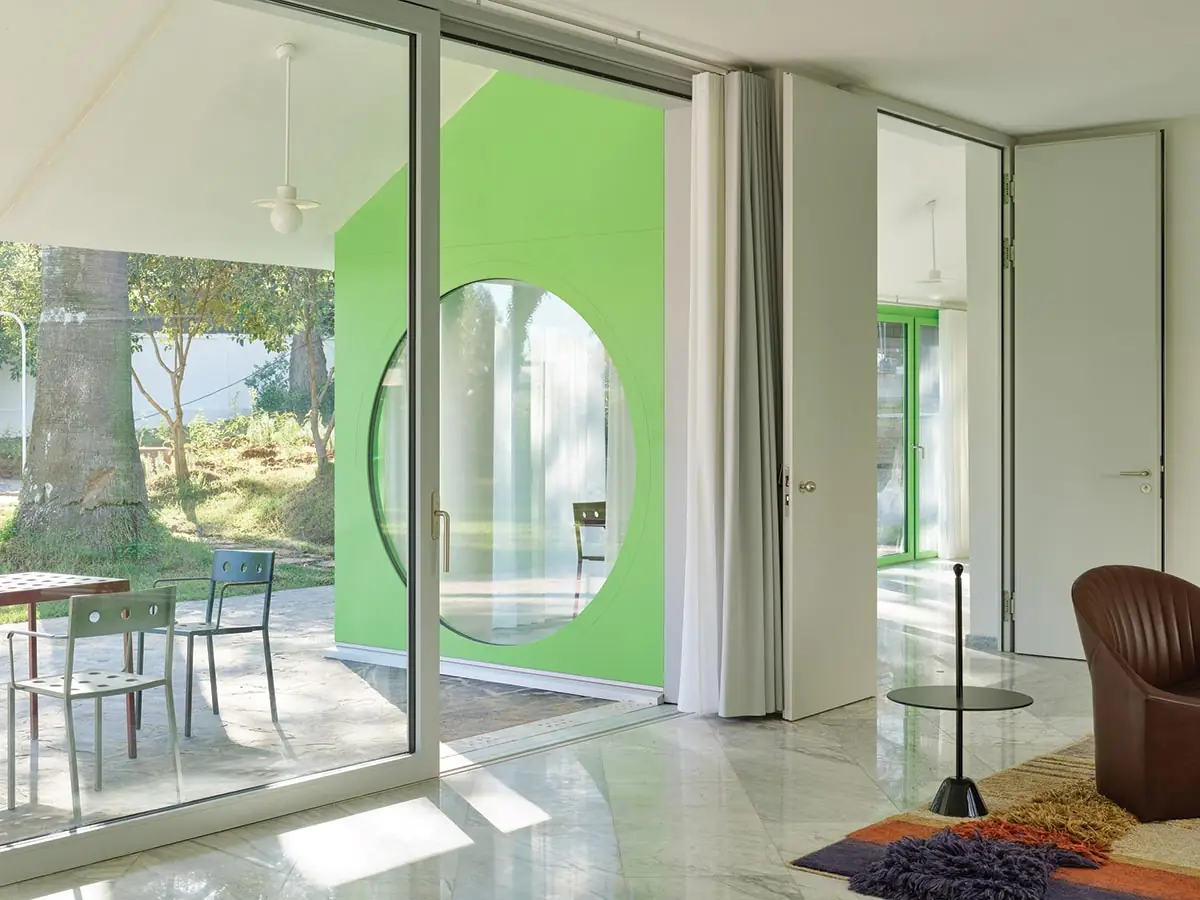
3
The residence sits in a walled compound, adjacent to a 10-year-old chancellery. That modernist block, clad in an oversize concrete screen referencing the mashrabiya lattices often found on traditional Arab buildings, offered Lütjens Padmanabhan a strategy to avoid—believing as they do that architectural language can only communicate if it is conveyed through the sensibility of our time, whatever that may be. Instead, the new house is a high-fashion retro bungalow, addressing a palm garden. It is full of delightful touches redolent of the Memphis Group: bathrooms covered in tiny gridded tiles, colorful doors with circular windows, and a roof terrace with a marble-clad bar.

4
A marble stair (4) leads to the roof terrace (5). Photos © Philip Heckhausen
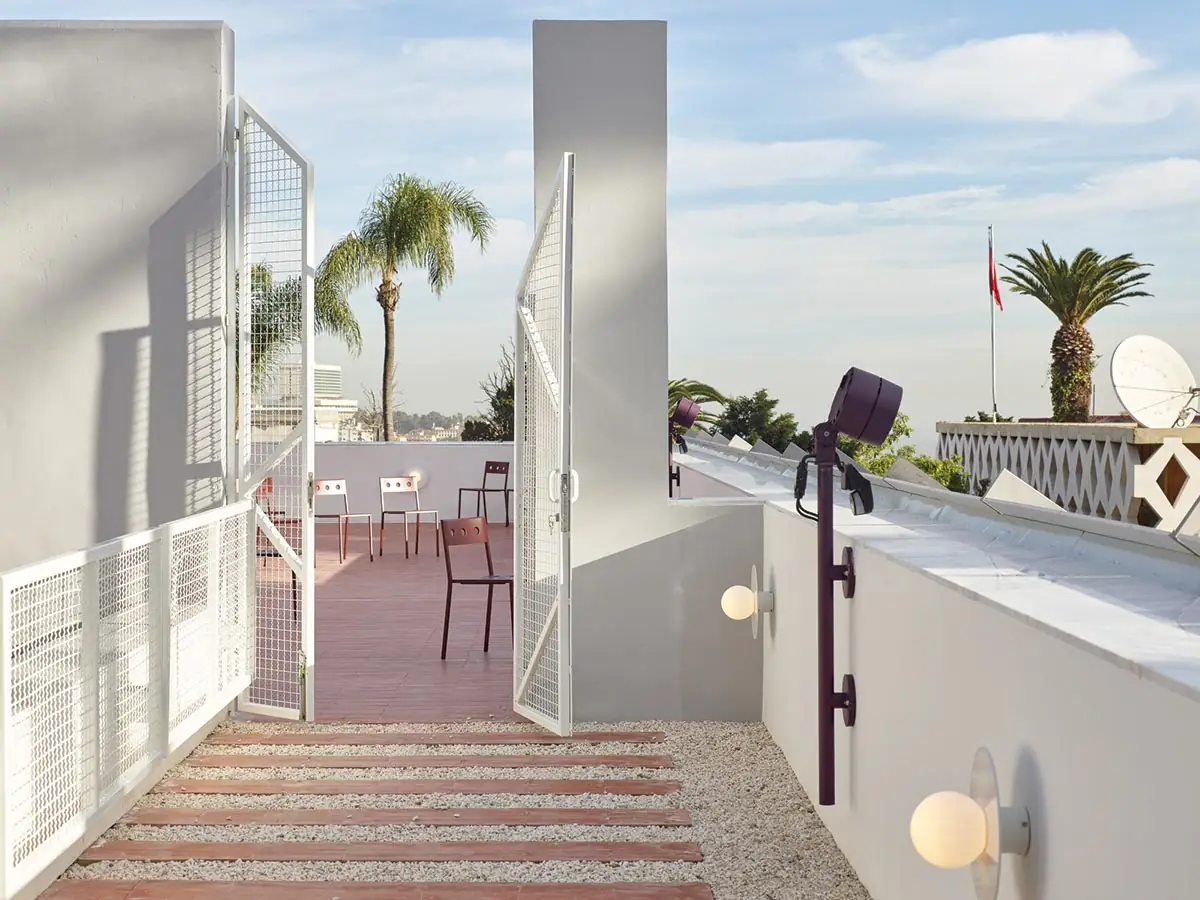
5
Oliver Lütjens describes the experience of walking through the house as “like being in a cubist painting.” The house layout is a hybrid of a Corbusian plan libre and a formal plan. Foldable doors connecting the reception spaces and the hallway are placed off-center or clustered at wall junctions. When these—as well as those to the loggia that run down the eastern length of the building, which in turn opens onto the garden—are open, the interior is legible as a single free space. When closed, it is cellular. Diagonal walls separate the services to the west from the public spaces, further subverting the formality. Likewise, a triangular interior garden—open to the sky, with glazed doors that can be opened to draw cool air through—separates the more public rooms from the unostentatious private quarters, with its four bedrooms, to the south.
Apart from the earthquake-resistant reinforced-concrete walls, the residence is unabashedly an assemblage of parts, mostly imported. Although they are not operable, the cementitious boards with aluminum fins—both sloped, as canopies, and raised, as screens—give the building an indeterminate character. The one touch of indigenous materiality throughout are the marble floors, laid on the diagonal to heighten the oblique quality of the interior.
The Federal Office for Building and Logistics, the project’s Swiss-government client, has been nimble in delivering an intelligent building by a practice as interested in conveying joy as they are in the intellectual game of architecture. The house itself, grounded in a universal language of modernism, does its job of subverting formality and the distinction between public and private by using strong diagonals and unexpected architectural relationships. It is a rich, intriguing platform for diplomacy.
Click drawings to enlarge
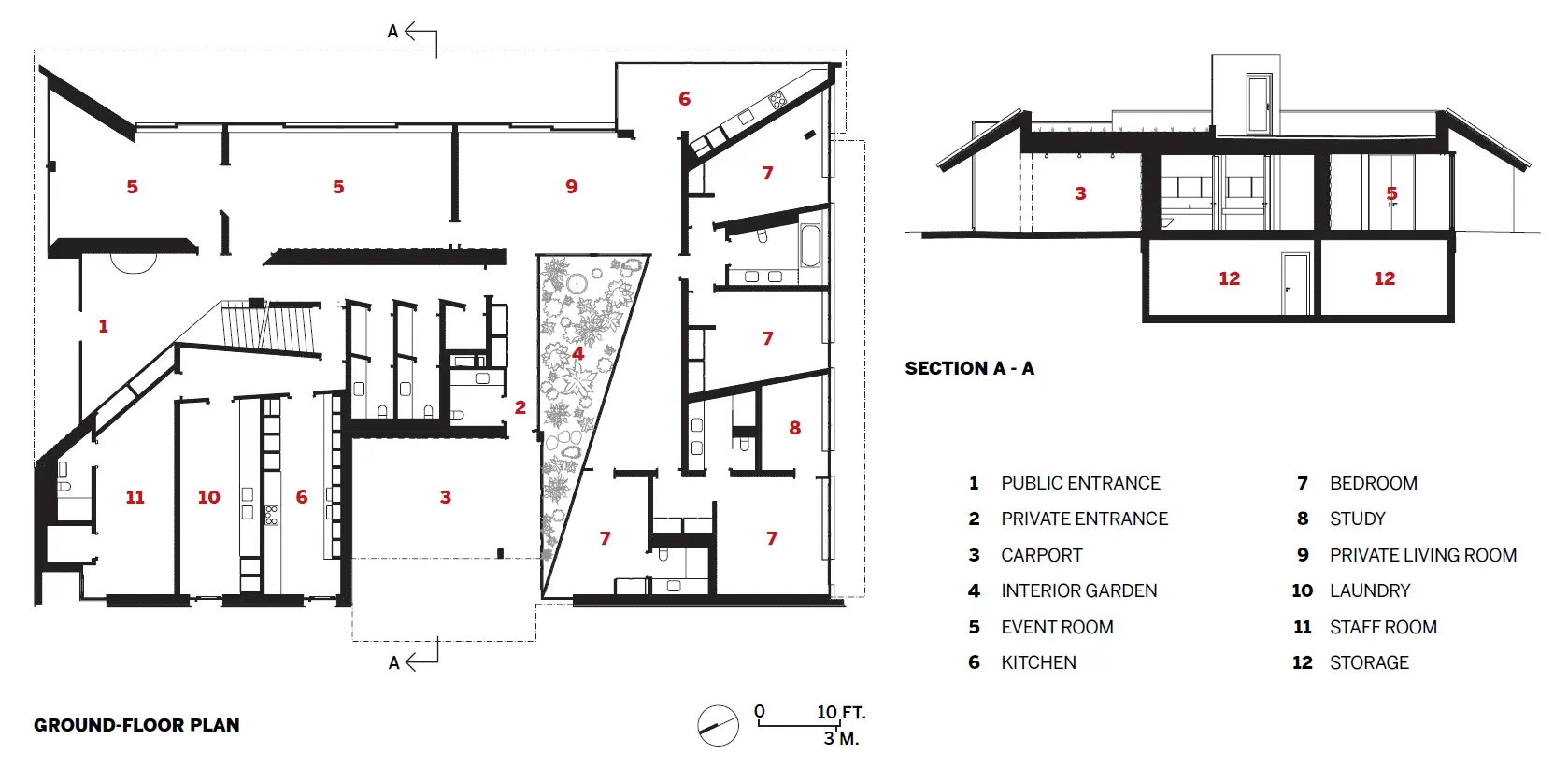
Credits
Architect:
Lütjens Padmanabhan Architekt*innen — Oliver Lütjens, Thomas Padmanabhan, principals; Pauline Delorme, project architect
Associate Architect:
MLM Architectes
Interior Designer:
Jörg Boner Product Design
Consultants:
SJB Kempter Fitze (structure); Zimmermann & Leuthe (building physics); SBS-Ingenieure (security); fux & sarbach ENGINEERING (electrical); Waldhauser + Hermann (mechanical)
General Contractor:
S.A.R.L. Groupe Sept
Client:
Federal Office for Buildings and Logistics
Size:
7,555 square feet
Cost:
Withheld
Completion Date:
February 2024
Sources
Fiber-Cement Panels:
Alecpo Sarl
Entrances:
Huber Fenster
Doors:
Frank Türen
Lighting:
EWO Lighting
Chairs:
Stattmann
Upholstery:
Wittmann
Hardware:
Mega



